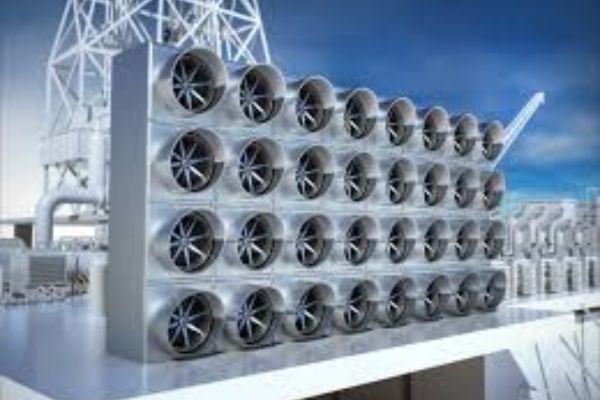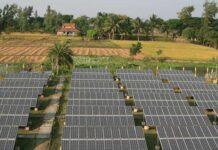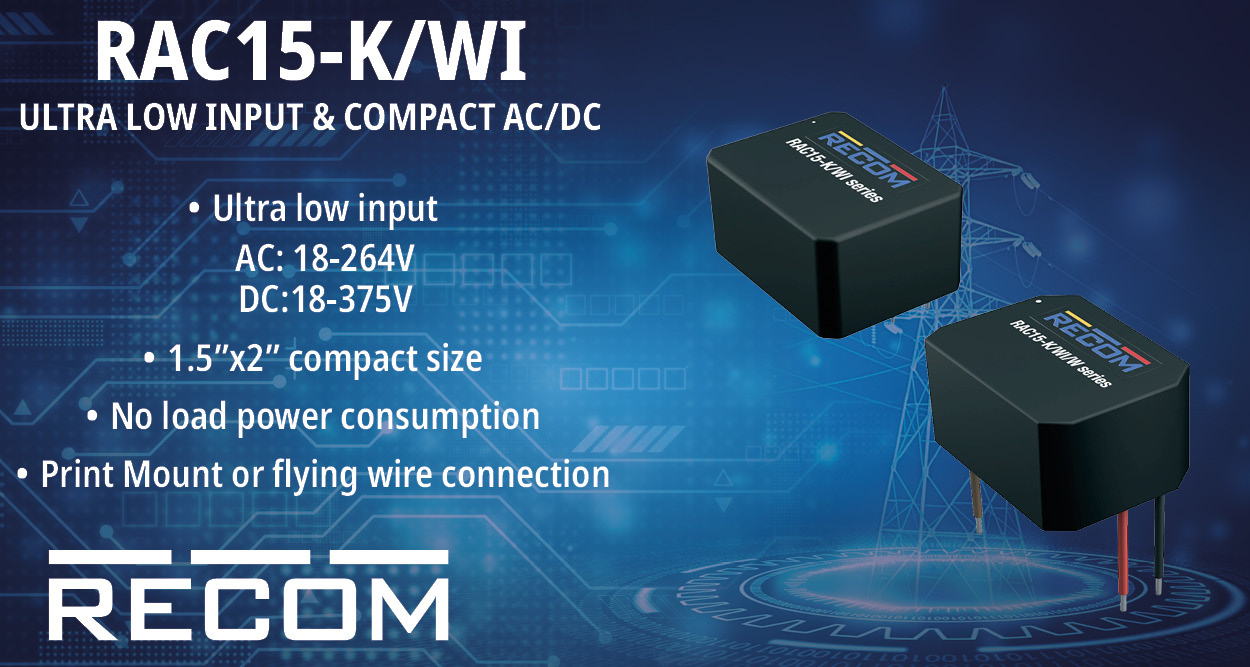The global carbon dioxide removal market size is forecasted to reach around USD 2,309.61 million by 2034 and is experiencing a CAGR of 13.69% from 2025 to 2034.
The global carbon dioxide removal (CDR) market has been growing in the past years and is expected to continue at a substantial pace for years to come. Growing awareness and concern about the impacts of climate change are driving governments, businesses, and individuals to seek effective solutions for mitigating carbon dioxide emissions. The CDR market benefits from this heightened awareness and the urgent need for sustainable practices.
Key Highlights
- North America region accounted for highest revenue share of 55.70% in 2024.
- By product, the direct air capture (DAC) segment captured revenue share of 42.10% in 2024.
- By application, the technology sector held leading position in 2024.
- By end user, the oil and gas segment generated highest revenue share of 26.10% in 2024.
The market encompasses various technologies, with direct air capture (DAC), bioenergy with carbon capture and storage (BECCS), and enhanced weathering representing the leading engineered approaches. Natural solutions including afforestation, soil carbon sequestration, and ocean-based methods complement these technological approaches. Direct air capture, while currently small in scale, is attracting significant investment and corporate interest, with costs ranging from $200-900 per ton CO2 removed depending on technology and scale.
Technology development is advancing rapidly across multiple fronts. Direct air capture companies are scaling operations and reducing costs through improved designs and operational experience. Enhanced weathering projects are moving from research to commercial demonstration, while BECCS facilities are expanding in scale and efficiency. Novel approaches including bio-oil sequestration and mineralization technologies are emerging from research phases. Market growth is supported by increasing corporate demand for high-quality carbon removal credits, particularly from technology companies and financial institutions. Advanced market commitments and long-term purchase agreements are providing crucial revenue certainty for project developers. Government support through programs like the US 45Q tax credit and European Union innovation funding is improving project economics.
The voluntary carbon market is evolving to differentiate carbon removal credits from traditional avoidance credits, with removal credits commanding premium prices. Market infrastructure development includes new trading platforms, improved verification methodologies, and specialized financial products. Integration with existing carbon markets and development of standardized protocols are supporting market maturity.
Market prospects are strong, driven by increasing recognition of the need for carbon dioxide removal to meet climate goals. Technological advancement and scaling effects are expected to reduce costs significantly, potentially reaching $100-200 per ton for some approaches by 2035. Market growth faces challenges including high current costs, infrastructure requirements, and regulatory uncertainty.
Key trends shaping future development include integration of multiple CDR approaches, development of regional removal hubs, and increasing focus on permanence and verification. The market is likely to see consolidation among technology providers while maintaining diversity in removal approaches. Success requires parallel development of supporting infrastructure, particularly CO2 transport and storage networks.
Policy support is expected to strengthen globally, with carbon pricing mechanisms and regulatory frameworks evolving to support CDR deployment. International cooperation on standards and protocols could accelerate market development while ensuring environmental integrity. The sector is attracting increasing investment from both venture capital and strategic industrial players, supporting continued innovation and scaling.
The market outlook suggests significant growth potential, with estimates indicating the need for gigatonne-scale removal capacity by 2050. Achievement of this scale requires sustained commitment to technology development, infrastructure investment, and supportive policy frameworks. Integration with broader climate mitigation efforts and careful consideration of environmental impacts will be crucial for sustainable market growth.
Stringent Regulatory Policies and Targets: Governments around the world are implementing and enhancing regulatory frameworks aimed at reducing greenhouse gas emissions. The imposition of carbon reduction targets and the integration of carbon pricing mechanisms create a favorable environment for the growth of the CDR market, as industries seek ways to comply with these regulations.
Advancements in CDR Technologies: Ongoing research and development efforts are leading to technological advancements in carbon removal methods. Improved efficiency, scalability, and cost-effectiveness of CDR technologies contribute to their wider adoption and growth in the market.
Increasing Corporate Sustainability Initiatives: Many companies are adopting sustainability goals and committing to achieving net-zero emissions. As part of their corporate social responsibility (CSR) initiatives, businesses are investing in CDR technologies to offset their carbon footprint, contributing to the overall growth of the market.
Key features include:
- Comprehensive analysis of carbon credit markets and pricing mechanisms
- Detailed technology assessments and commercialization roadmaps
- Analysis of policy frameworks and regulatory environments
- Environmental impact and sustainability considerations
- Strategic insights into market opportunities and challenges
- Regional market analysis covering major global regions
- Detailed cost analysis and economic viability assessments
- In-depth coverage of over 140 companies shaping the industry.
Active carbon companies in the markets this week include: BluSky Carbon, SLB (NYSE: SLB), DevvStream Holdings (NEO: DESG), Base Carbon, LanzaTech Global.
Rising Investments and Funding: The CDR market is witnessing increased investments from both public and private sectors. Governments, venture capital firms, and major corporations are allocating funds to support research, development, and implementation of carbon removal technologies, fostering market growth.
Emergence of Carbon Offset Markets: The development of carbon offset markets, where entities can buy and sell carbon credits, provides financial incentives for the deployment of CDR technologies. This market dynamic encourages the adoption of carbon removal solutions as a means for businesses to offset their emissions and comply with regulatory requirements, thereby driving market growth.
BluSky Carbon Inc. (CSE: BSKY) (OTCQB: BSKCF) Commences Biochar Production in Arkansas – BluSky Carbon Inc. (FWB: QE4 /WKN A401NM) (“BluSky” or the “Company”), an innovative entry into the carbon removal clean technology sector is very pleased to announce that it has commenced production of biochar at a dedicated facility in Arkansas. The event marks the official startup of initial biochar production aimed at servicing the recently announced $105 million, ten-year supply agreement (see Company news release dated Sept 24, 2024) (“Supply Agreement”).
The startup of the Vulcan Heavy system at this location represents the first of three units required to service the totality of the Supply Agreement. Once the other two units are procured and fully operational (see news release dated September 24, 2024), these machines are expected to produce a combined output of approximately 40,000 tons of biochar annually. It is also expected that production byproducts such as bio-oil and syngas may help reduce the Company’s overall production costs by providing some of the energy required to power the Vulcan systems, potentially along with surplus power capacity to contribute towards operating BluSky’s related carbon removal technologies (CDR) including its Medusa Carbon mineralization process and Kronos Direct Air Carbon Capture technology.
The inaugural production plant has been dedicated as “AR1“ and is located at 110 Industrial Park Drive in Warren, Arkansas. The facility consists of a multi-room 50,000 sq/ft enclosure located on an 8.54-acre property. Warren services an established sustainable timber industry with a strong presence in the town and surrounding area. Nearby softwood wood chip production (mostly yellow pine) serves as a nearly limitless source of clean biomass feedstock for the BluSky Vulcan Heavy pyrolysis systems.
BluSky CEO Will Hessert comments, “The facility is ideally suited for scalability. We have ample room for the three Vulcan Heavy units as required to service our initial regional contract, with additional room to double that production without the need to create more space. The property itself is large and well suited to handle industrial scale logistics and storage needs.” CONTINUED… Read this full press release.
Other recent carbon developments in the markets of note include:
SLB (NYSE: SLB), formerly known as Schlumberger, recently announced it was aiming to accelerate the deployment of carbon capture technology through an investment in Norway’s Aker Carbon Capture. SLB said that it will pay about $380 million, or 4.12 billion Norwegian kroner, for an 80% stake in the pure-play carbon capture company. The deal is expected to close by the end of the second quarter.
Schlumberger rebranded as SLB in 2022 as part of the company’s growing focus on lower-carbon technologies. SLB is targeting $3 billion in revenue from its new energy business by the end of the decade. CEO Olivier Le Peuch told analysts during the company’s fourth-quarter earnings call that carbon capture and storage will be a leading contributor to that $3 billion target. SLB is participating in more than $400 million worth of tenders related to carbon capture and storage.
DevvStream Holdings Inc. (NEO: DESG) (OTCQB: DSTRF), a leading carbon credit project co-development and generation firm specializing in technology-based solutions, recently announced an agreement (the “Agreement”) to purchase 1.2 million carbon credits from the Ipixuna REDD+ Project (the “Project”), subject to final approval by the board of Focus Impact Acquisition Corp. (“Focus Impact”). In exchange for the credits, the vendor will receive newly authorized shares of common stock of the public company (“NewCo”) resulting from DevvStream’s previously announced business combination with Focus Impact (the “Business Combination”). Upon closing of the Business Combination-projected to occur on or before October 31, 2024-NewCo is expected to be named DevvStream Corp. and begin trading on the Nasdaq Stock Market LLC (“Nasdaq”) under the ticker symbol “DEVS.” The Company expects the carbon credit purchase Agreement to close in conjunction with and conditional upon the Business Combination and Nasdaq listing.
Base Carbon Inc. (NEO: BCBN) (OTCQX: BCBNF) with operations through its wholly-owned subsidiary, Base Carbon Capital Partners Corp. (together, with affiliates, “Base Carbon”, or the “Company”), recently announced that it has received a second transfer of 1,014,635 carbon credits from its Rwanda project, each designated with Verra’s Article 6 Authorized label.
Pursuant to the terms of the project agreement with the DelAgua Group, the project developer, and the letter of authorization issued by the Government of Rwanda (“LOA”) with respect to the project, the Company has received a transfer of 1,014,635 Article 6 Authorized labeled carbon credits. This volume is net of 23,060 carbon credits which have been retired to contribute towards global emission reductions and 115,300 carbon credits to be made available to the Government of Rwanda pursuant to the terms of the LOA. The Company now holds a total inventory of 1,712,193 carbon credits generated from the Rwanda project, all designated with Verra’s Article 6 Authorized label.
LanzaTech Global, Inc. (NASDAQ: LNZA), the carbon recycling company transforming waste carbon into sustainable fuels, chemicals, materials, and protein, has been awarded $3 million by the U.S. Department of Energy’s (DOE) Office of Fossil Energy and Carbon Management (FECM), as part of a broader $29 million investment program to advance its carbon management priorities. LanzaTech’s Project ADAPT (“Accelerating Decarbonization via Advanced Production Technologies”) was selected to address FECM’s priority of converting carbon dioxide (CO2) into environmentally responsible and economically valuable products.
We are thrilled to receive this support from the U.S. Department of Energy to progress our work around scaling the conversion of waste CO2 to make some of the world’s most needed chemicals,” said Dr. Jennifer Holmgren, CEO of LanzaTech. “CO2 is an essential feedstock of today and the future, and Project ADAPT leverages our expertise and existing operations to accelerate the commercialization of transformational carbon capture and utilization technologies that deliver cleaner and more sustainable energy and products.
Get full report insight@ https://www.cervicornconsulting.com/customization/2530

















